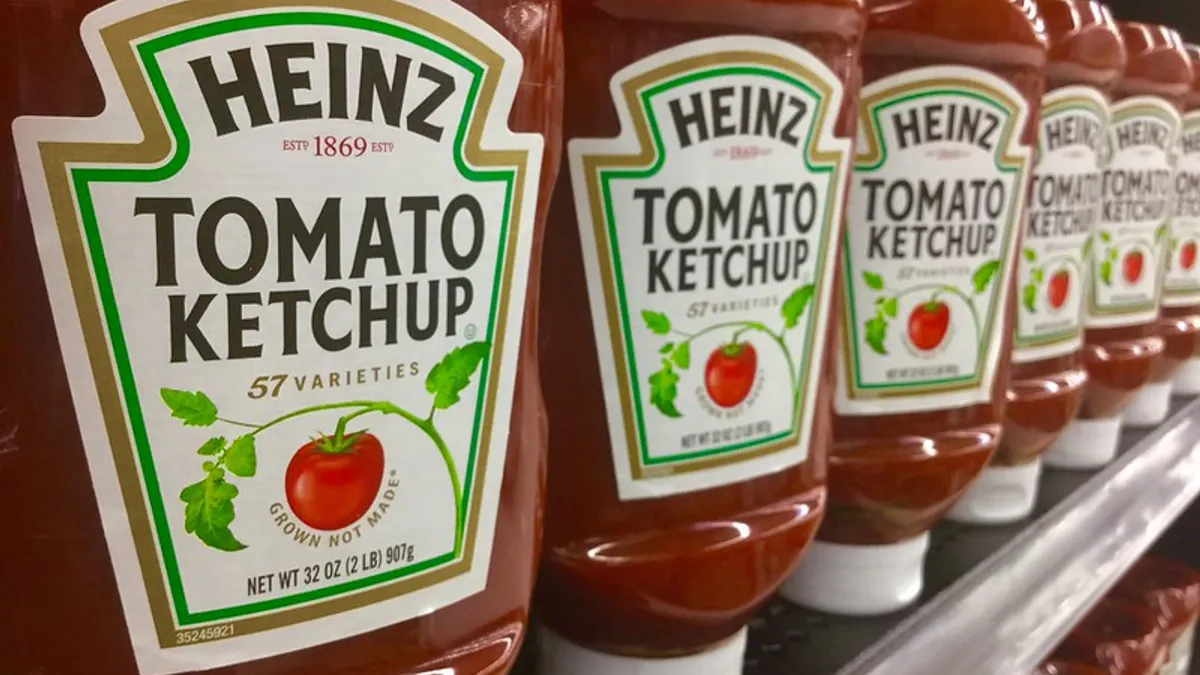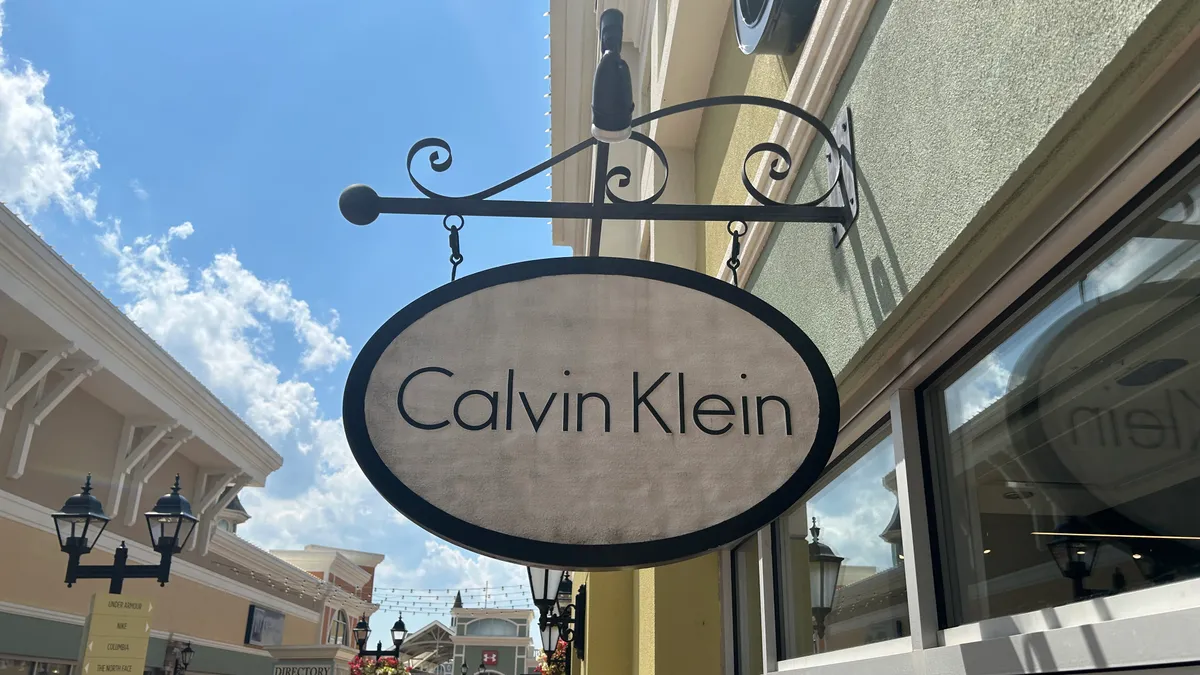Every weekday at 8:30 a.m., a group of Kraft Heinz officers gathers in a corner office affectionately deemed "the war room" at the company’s Chicago headquarters. They don’t discuss how they might dominate the competition. They discuss the real war — the war within every supply chain.
No matter how stiff the competition in any category of manufacturing, delivering what you say you’re going to deliver when you say you’re going to deliver it is a primary challenge for any supply chain. That’s why the metric on-time and in-full (OTIF) causes so much consternation.
OTIF went mainstream as a supply chain metric around August 2017 when Walmart began evaluating suppliers by their score and penalizing those that couldn’t comply with fines.
In January 2018, Walmart raised the bar. At the time, Steve Bratspies, CMO for Walmart, said the new standards were not meant to be “unreasonable”— just to enable better store operations.
| Date | OTIF standard | Penalty based on shipment's value |
|---|---|---|
| August 2017 | 75% | 3% |
| January 2018 | 85% | 3% |
| March 2019 | 87% | 3% |
In March, the retailer separated the on-time and in-full parts of the standard. "The separate metrics will help suppliers increase their focus on delivering in-full, which we see as a key to continued improvement with in-stocks," spokesperson Michelle Malashock told Supply Chain Dive in March.
Walmart is not the only retailer relying on OTIF, Michael Zimmerman, a partner at A.T. Kearney, told Supply Chain Dive in an email. Other retailers "do not have a choice because if shippers prioritize Walmart with their best carriers, that means the other shippers are more likely to get the lower OTIF service carriers," Zimmerman said.
He explained the controversy around the KPI, and particularly the fines, stems from when retailers don’t optimize their own receiving processes. When carriers have long wait times to drop off their loads, shippers can end up with fines and lower OTIF scores along with a cascade of later deliveries — even when the shipper has done everything they can to deliver on-time and in-full.
Additionally, the metric is often perceived to serve only the retailer, because more precise deliveries allow retailers to keep inventory tighter by requesting fewer, more frequent shipments.
Zimmerman said while that is certainly a retailer benefit, there are many more, like better insight into receiving labor scheduling, reduced administrative costs and more control over dock congestion. Plus, “if you avoid a partial, that’s a shipment less to compensate for the partial,” he added.
Embedding OTIF into company fiber
Graham Teague, head of customer supply chain at Kraft Heinz, called the metric “a common index within the industry” and told Supply Chain Dive his team had been moving toward it before the world’s largest retailer upped the OTIF stakes.
Teague said Kraft Heinz’s conversion to the controversial KPI began in 2017. Kraft and Heinz merged in 2015 and the combined entity produced roughly 11,000 truck trips per week. With a larger network to manage, Kraft Heinz executives saw several customers marching toward formal, enforced OTIF standards and decided to follow suit, said Teague.
But instead of a burden, Teague said using the guiding star of OTIF has benefited the organization in the long haul — mainly because it demands a data-driven approach to performance.
“It's a very helpful because it can measure across dimensions. We can measure OTIF by customer, group of customers, group of products, subset of our network, and we do exactly that,” said Teague. Although customers have picked up and dropped the metric over time, Kraft Heinz finds it a helpful gauge of customer satisfaction.
"If shippers prioritize Walmart with their best carriers, that means the other shippers are more likely to get the lower OTIF service carriers."

Michael Zimmerman
Partner, A.T. Kearney
Embedding OTIF into the fiber of Kraft Heinz took considerable effort. Teague said Kraft Heinz has a strong “culture of rituals.” Existing processes needed to be augmented to serve the metric — engrained like “muscle memory,” Teague described. The morning meeting in the war room is one such routine.
Prior to 2017, the shipper used case-fill rate and on-time delivery. Placing one central OTIF metric overtop of these keeps the focus on the customer experience. OTIF "pulls together" all other KPIs. It's the starting place for any review process regarding almost any issue of supply chain performance.
Like many shippers, Teague said the OTIF score can be shocking when shippers start marking it.
“When you're in school, a good grade is in the nineties or the high nineties. Right?” said Teague, whose OTIF score three years ago was not a grade most parents would approve of. “We had to get our heads around when the metric was introduced what our target is, and what good is. So it took some acclimation,” he said.
OTIF in action
Today, Kraft Heinz has a better OTIF score, and a new level of confidence in decision making. Though the company would not share its exact score, a spokesperson said the company gained five percentage points in 2018 alone.
The measure helps the Kraft Heinz teams make complex decisions affecting multiple customers since with OTIF as the prevailing measure, priorities became more clear.
This confidence in Kraft Heinz’s ability to deliver orders on-time and in-full has also spread into its freight management. Kraft Heinz does not have a fleet of its own, but employs common carriers. A better OTIF score allowed the shipper to work with more drop trailers.
“We had an opportunity to expand the amount of asset-based carriers that we used versus the broker carriers. And that has had a positive impact on our delivery results,” said Teague. Better supply chain reliability with the help of Four Kites GPS tracking has allowed Kraft Heinz to deepen partnerships with carriers as a result.
"We had to get our heads around when the metric was introduced what our target is, and what good is. So it took some acclimation."

Graham Teague
Head of Customer Supply Chain, Kraft Heinz
Teague told a story about a day where product was needed for an immediate outbound shipment. The company as able to quickly dispatch product to the correct distribution center and get it to the customer — tracking it all the way. That’s the type of situation Kraft Heinz might have struggled with before OTIF.
Teague’s goal for the near term is to increase Kraft Heinz’s customer-side supply chain agility. OTIF has given his team the ability to turn around faster, more accurate shipments, but he’s still working on feeling confident reacting quickly to customer needs on a regular basis.
Though the constraints of OTIF are indeed constraints, Teague’s view is they’re the kind of constraints that beget growth.
This story was first published in our weekly newsletter, Supply Chain Dive: Operations. Sign up here.






















